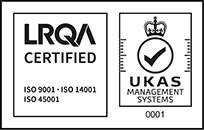Call us free on 0808 168 9540
Call us free on 0808 168 9540

Phlorum provides Biodiversity Net Gain (BNG) services across southern England, including London, Surrey, Sussex, Kent, Hampshire, Dorset & south Wiltshire. Our BNG consultants undertake BNG surveys and assessments to provide accurate BNG calculations.
Biodiversity Net Gain (BNG) is a quantitative tool used with the aim to deliver measurable improvements in biodiversity. It can be achieved through on-site enhancement, habitat creation, and off-site measures.
A Biodiversity Net Gain (BNG) calculation compares the baseline habitat against the post-development habitats. A BNG is achieved if the post-development habitat improves biodiversity overall for a site.
This is currently set at 10% net gain, although it is subject to review. As a result, to achieve a net gain, there must be an increase in ecological value. As the soft landscaping areas of a development can usually be significantly enhanced, these are often target areas for improvement.
However, if the soft landscaping areas (excluding gardens that can be changed by owners or paved over) before a development are less than the soft landscaping areas after a development, then it is highly likely that a net gain cannot be achieved on site. In this case, off-site enhancement (e.g. payment to enhance another site) would be required.
A site survey is carried out to assess the baseline habitats.
Habitats are assessed based on the terrestrial area, terrestrial linear, and aquatic linear features.
Where Biodiversity Net Gain cannot be achieved on site, there is the option for off-site enhancement measures. In these instances, developers would contribute to local schemes. Ideally, local authorities will identify areas for ‘Local Nature Recovery Strategies’, which must be maintained for at least 30 years.
These local Nature Recovery Strategies are key to building a nationwide ‘Nature Recovery Network’. If local schemes are unavailable, developers would be able to invest in ‘Nationally Strategic habitats’ by purchasing government-provided ‘biodiversity credits’.
There are several biodiversity metrics; therefore, the preferred metric must be confirmed before the Biodiversity Net Gain calculation is carried out. The Statutory Biodiversity Metric is the most common, but other organisations and local planning authorities have their own systems.
Phlorum’s BNG consultants have extensive experience providing BNG consultancy, including BNG assessments and working with Biodiversity Net Gain calculators. Contact us now to book your consultation.










